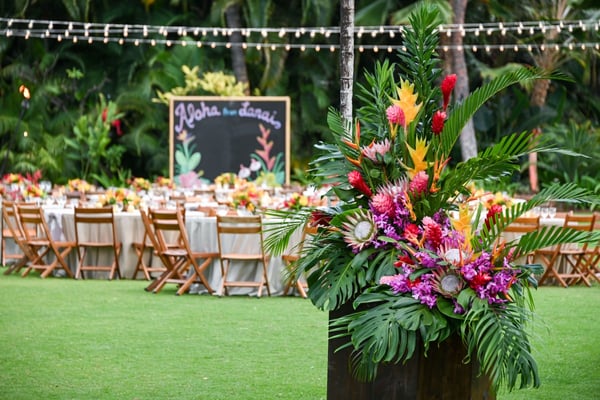 As an employer, you likely hope the individuals you hire come with personal and professional goals that your company can help them achieve. Achieving those aspirations is largely driven by internal motivators. When it comes to business objectives, you may need to give your employees a boost in order to motivate, excite, and engage them. That’s what incentive programs are designed to do. However, if handled incorrectly, there's a risk of hosting an incentive program that fails to accomplish any of those objectives. With a few strategies and concepts in mind, you can help make your incentive program a success for both you and your employees.
As an employer, you likely hope the individuals you hire come with personal and professional goals that your company can help them achieve. Achieving those aspirations is largely driven by internal motivators. When it comes to business objectives, you may need to give your employees a boost in order to motivate, excite, and engage them. That’s what incentive programs are designed to do. However, if handled incorrectly, there's a risk of hosting an incentive program that fails to accomplish any of those objectives. With a few strategies and concepts in mind, you can help make your incentive program a success for both you and your employees.
Quick Links
- Why Invest in Incentive Programs?
- Top Incentive Program Challenges
- Six Strategies to Improve Incentive Programs
Why Invest in Incentive Programs?
When it comes to business, ensuring return on investment (ROI) is often a crucial component of any business strategy, and incentive programs are no different. Spending should always be carefully aligned with the return. Thankfully, the research is in, and incentive programs and incentive travel offer a multitude of benefits.
First, a carefully planned and executed incentive program can help clarify and align your overarching goals. When the incentive is tied directly to an important departmental or company-wide objective, your entire team understands where you’re headed and how you plan to get there.
In addition to that alignment, incentive programs also:
- Motivate team members, which improves their personal health and well-being
- Engage employees
- Increase productivity (during and after your event)
- Boost employee morale
- Increase employee loyalty and retention
- Foster a culture of reward and recognition
Across the board, both your business and your team experience some big benefits from a well-planned and executed incentive program.
.jpg?width=600&height=400&name=2.6.23WH%26RDay4Barcelona_TR-3390%20(1).jpg) Top Incentive Program Challenges
Top Incentive Program Challenges
Well-planned and executed programs are essential, but that doesn’t mean they’re easy. In fact, recent research into incentives suggests building and creating an effective incentive program is about more than putting a valuable reward at the finish line. Here are some elements to consider when planning:
1. Addressing a diverse audience
It’s no secret that millennials, especially, prefer experiences over monetary compensation, and they’re making up more and more of the workforce. But research shows that non-monetary compensation and experiences are growing across multiple generations. That said, there’s no guarantee that a diverse audience is going to enjoy the same activities, so when planning a destination event, be sure to find a location that offers a wide variety of activities.
2. Avoiding unhealthy competition
One of the big concerns about poorly designed incentive programs is the potential problems created when there’s unhealthy competition. This is why proper design and execution are essential to reaping the benefits and rewards of an incentive program. You do not want to encourage employees to focus only on the short term. Instead, make sure you explain how your goals fit into your bigger business picture to ensure that your team has their eyes not only on their potential prize but also on the organization’s success as a whole.
3. Communicating and tracking progress
For an incentive program to truly be successful, it requires a significant amount of communication around how the goal fits into your business objectives, how you’ll be measuring and tracking progress, and how you communicate that with your team. It’s not enough to toss the incentive out there and hope the team becomes engaged. We’ll talk more in our tips about using communication tools, but the sooner you leverage those tools to help your team track their progress, the better.
Six Strategies to Improve Incentive Programs
Given the challenges, it’s important to design incentive programs as more than quid pro quo. Consider, instead, how you can build and design details of the program that will encourage the elements you’d like to foster and build your program around.
1. Create both team and individual incentives
Want to ensure you get buy-in from the whole team? Include incentives for entire teams, as well as individual rewards. For a sales team, you can build an incentive into a yearly sales goal with a special reward at your event for the top performer. Not only does this help with team building but individual achievements are also recognized. This way, you get the best of both worlds, and competition can stay healthy.
That said, be careful about offering an incentive program for one department but not another. All of your teams are, ideally, working together to achieve larger goals and segmenting them out when it comes to incentives can backfire. Consider a larger, company-wide destination event that rewards everyone if goals are met.
2. Build an incentive program website or app early
We’ve discussed the importance of event apps, and you can easily create one for your program or event. It’s a great way to keep track and communicate with your team. You can offer encouragement, a leaderboard, and even begin marketing a destination event.
Then, when it comes time for the actual event, you already have users who are invested in the app, making it a valuable tool for communicating and reporting/data gathering.
 3. Include employees in your planning
3. Include employees in your planning
One of the challenges we noted above was working with a diverse audience. Your team, across departments and company wide, may have a wide range of wants and needs regarding incentive programs. Talk with them and plan from there. The added benefit here is greater buy-in from your employees since they will have had an active role in planning their own incentive program.
4. Be clear about the goals
Even with an amazing incentive that suits a variety of people, a vague or unclear goal can quickly derail any program. Your employees need to know what is expected of them and what they will need to achieve to receive the reward. Keeping S.M.A.R.T. goals (specific, measurable, attainable, relevant, and timely) in mind is an important part of this process.
5. Consider elements that offer personal growth
Incentive programs don’t have to always be about sales goals. Few things will help build a culture of learning and boost employee retention or loyalty like an incentive program that rewards employees for investing in their career growth. For example, when it comes to training or certifications, consider including those in an incentive program. Your employees are rewarded for investing in themselves, and this education becomes an investment in your business.
6. Connect it to your corporate culture
Much like an event theme, your goal and your incentive program should work to tie together important values for your business. If creativity is a value, consider an event that includes creative elements. You’ll reap rewards when your team returns and likely see some new creative solutions. If giving back to the community is a value, consider incentive programs that incorporate social responsibility, like volunteer tourism (aka voluntourism).
Incentive programs are only as strong as the buy-in from your team. Your team buy-in is a direct reflection of how you engage them from the start, including them in conversations regarding rewards. However, once you’ve determined the end goal for your business, and the program itself, everything in between requires time, attention, detail, and expertise.
That’s where a team like Bishop-McCann comes in. With extensive experience in incentive programs and recognition events, we’re ready to help you make the most of your event, engage your employees, and reap the benefits and rewards that a successful incentive program can deliver. Ready to talk? Get in touch with us today!
